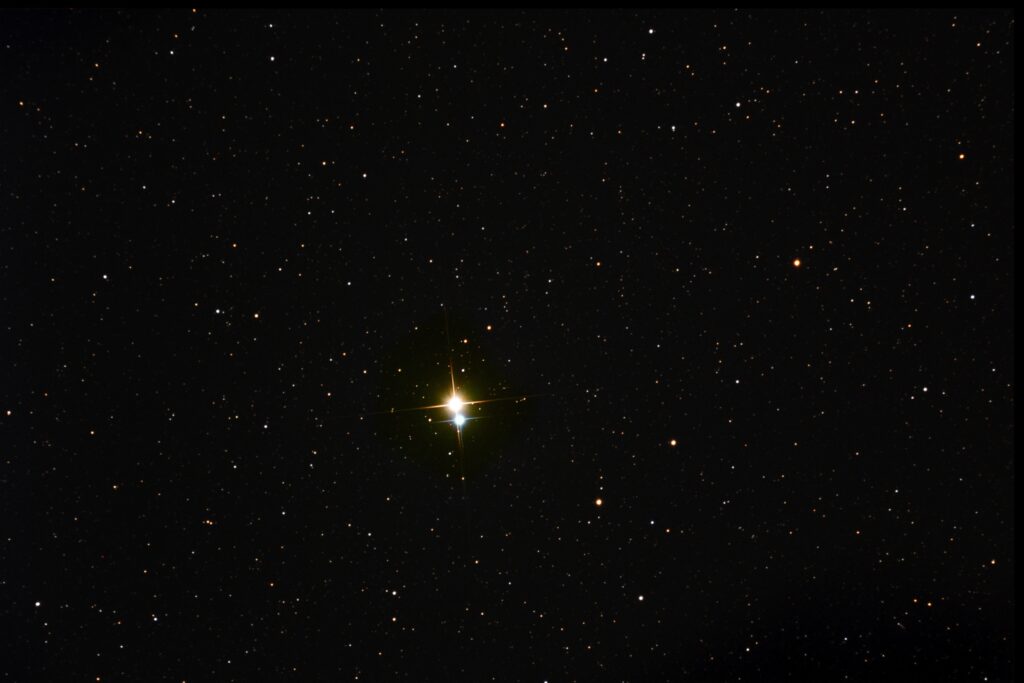At the foot of the Northern Cross (or the beak of Cygnus, the swan) lies Alberio. To the unaided eye, it is an average star. But in a small telescope it is transformed into one of the most beautiful sights in our galaxy—a "double star" consisting of a brighter gold star and a slightly dimmer bluish star.
Both stars were among the 118,000 stars whose distances were measured with considerable accuracy by the European Space Agency's Hipparcos satellite in the early 1990s. Since both stars have a measured distance of 380 light years, it may be assumed that they are a "physical" double star, meaning two stars that are gravitationally linked and orbiting about a common center of gravity. However, the stars have a wide separation of 34 arcminutes (0.00016 radians), which at a distance of 380 light years corresponds to a separation of 0.06 light years, or 360 billion miles (roughly 45 times the diameter of Pluto's orbit). This is a considerable distance for a physical double star, and has caused some astronomers to conclude that Albireo is a visual rather than a physical double—two stars that appear close together from our perspective, but that are not in orbit about a common center of mass.
If Albireo is a physical double, the two stars have an orbital period of at least 100,000 years. One thing is known. The larger star in the above image is a physical double star with a close companion that is visible only in large optical telescopes.
Double Star Beta Cygni ("Albireo")
Date Taken:July 23, 2009
Location Taken: Conditions of Location: Equipment Used:14.5" Ritchey-Chretien telescope, SBIG STL11000 CCD camera, Astrodon RGB filters, TCC, PIR, remote guide head used with Takahashi Sky90 for autoguiding, T-Point used for polar alignment (required for each imaging session due to my portable setup).
Processing Used:6x15 sec LRBG unguided exposures (total exposure time of 6 min) processed in Maxim DL and Photoshop.
Distance from Location:380 light years
Constellation:Cygnus (the "swan")
Other Link:
